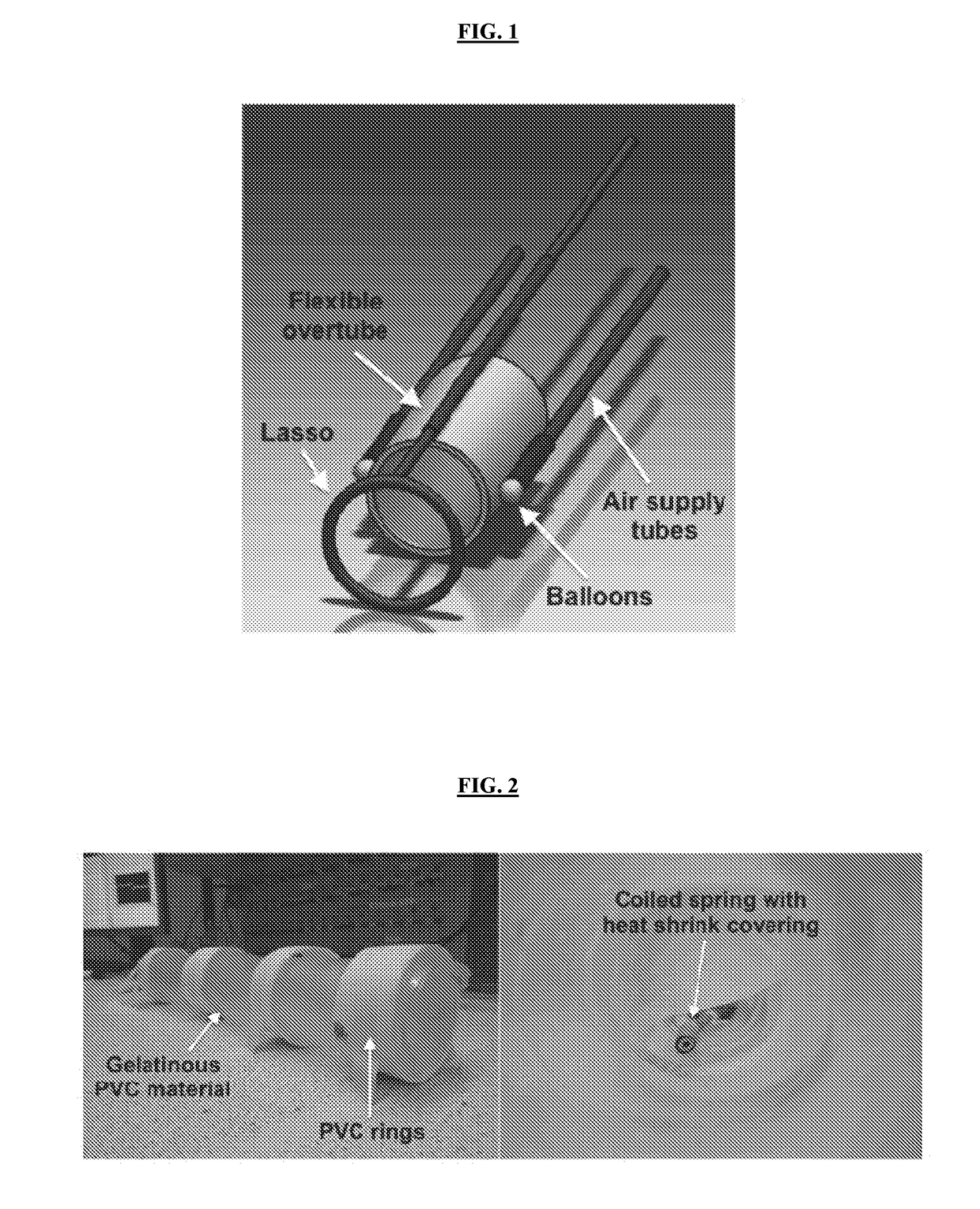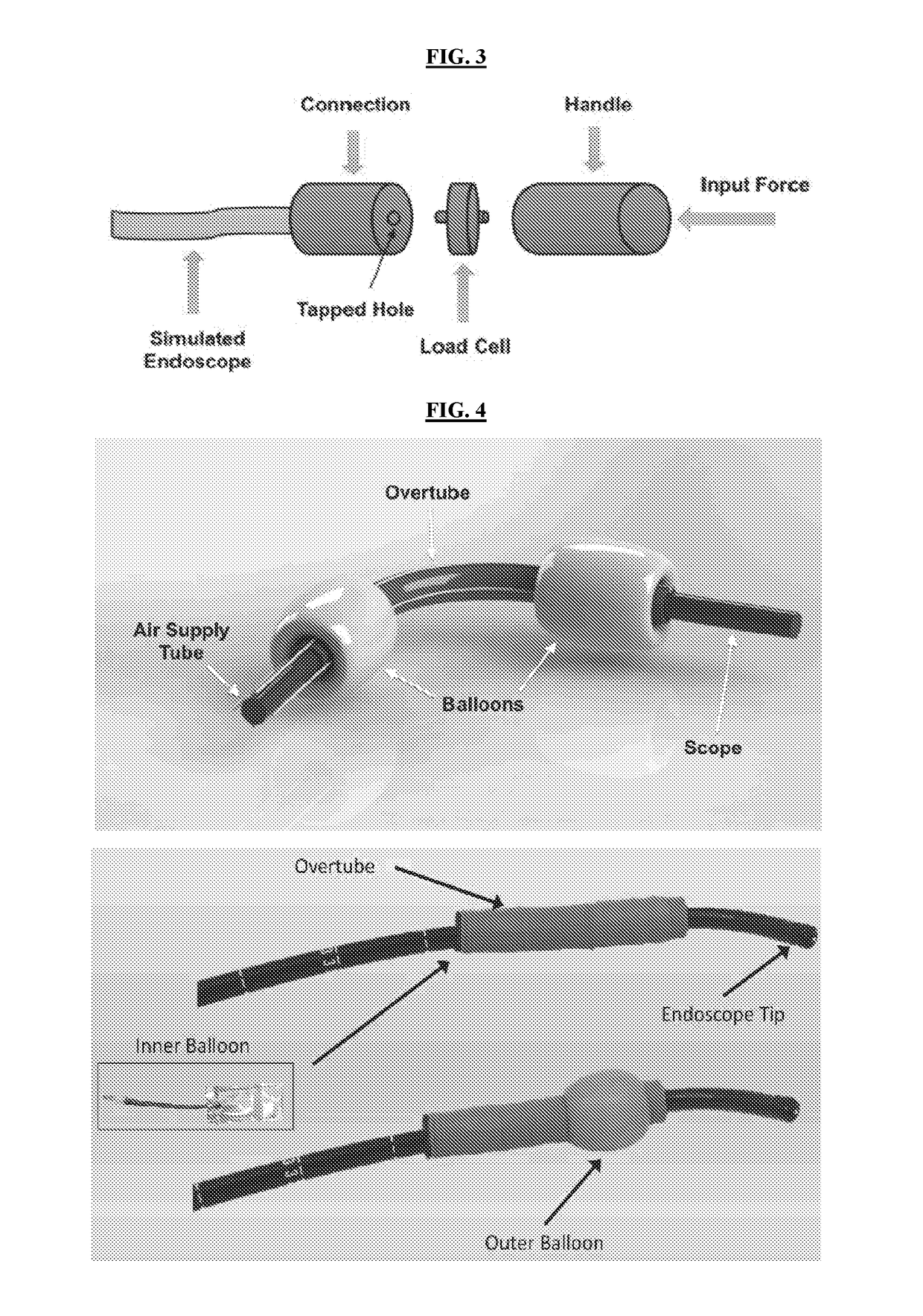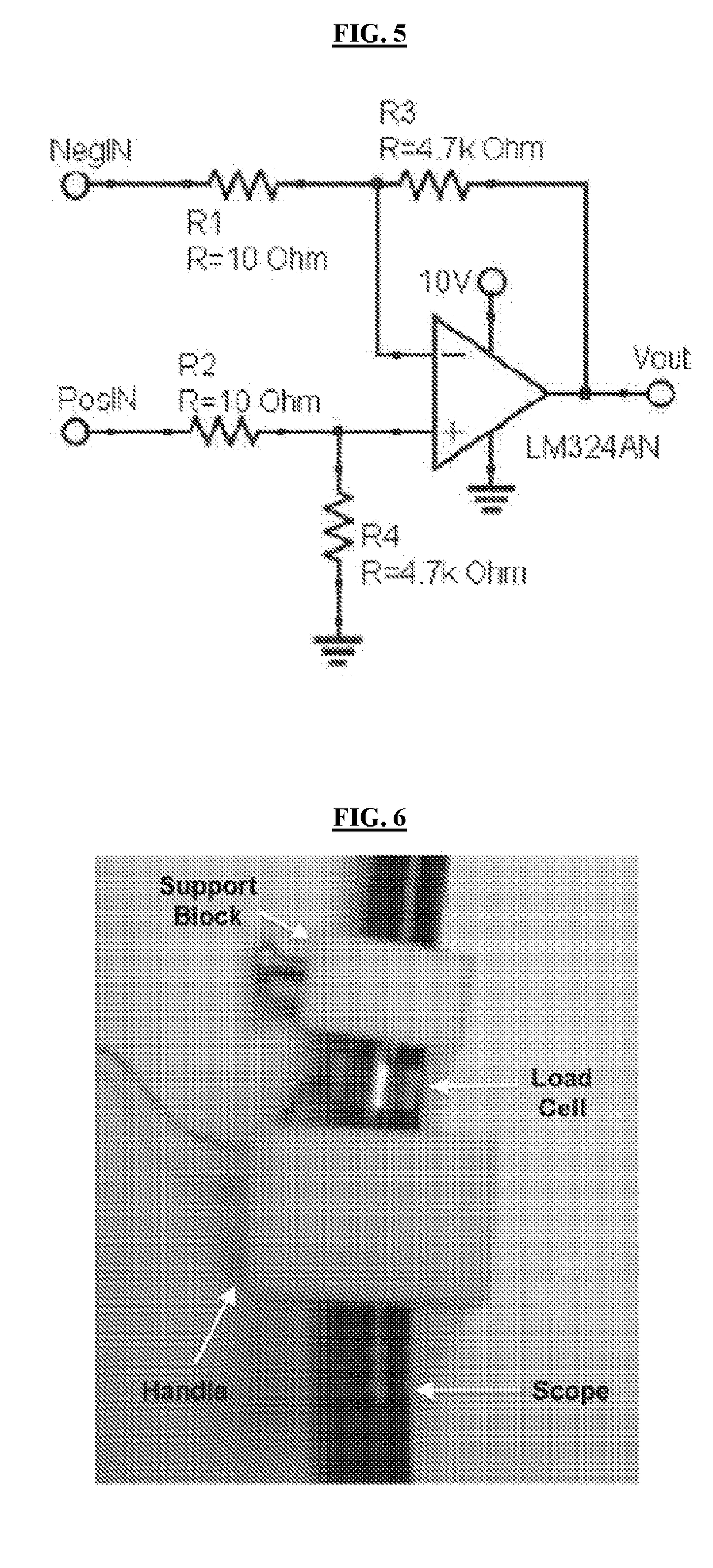Endoscopic devices and methods using same
a technology applied in the field of endoscopic devices and methods using same, can solve the problems of difficult surgery to perform, requiring specialized doctors with extensive training and expertise, and more difficult to advance through the colon
- Summary
- Abstract
- Description
- Claims
- Application Information
AI Technical Summary
Benefits of technology
Problems solved by technology
Method used
Image
Examples
example 1
[0074]The invention relates in part to the development of an endoscope tip device that decreases the necessary push force exerted by doctors through the splenic flexure in colonoscopy procedures. In order to develop a device that effectively solves this problem, certain non-limiting requirements were identified:
(a) Push Force Reduction: the device should reduce the push force necessary to advance a colonoscope through the colonic tract.
(b) Integration with Existing Endoscope: as this device is to function as an attachment to existing endoscope tips, the device's inside diameter must be able to fit around the outer diameter of the endoscope. Typically, endoscopes have an outer diameter of approximately 10-13 mm.
(c) Ease of Use: a single surgeon will operate this device; therefore, controls must be simple and ergonomic.
(d) Length Limit: because this attachment should maneuver around tight corners, the length of the device (or each segment if the device consists of multiple segments) m...
example 2
esign
[0075]One device of the invention comprises support balloons (FIG. 1). This design comprises a flexible overtube that can be secured onto the endoscope with a lasso. Two balloons are attached to the sides of the overtube and, when inflated, they allow the overtube to remain stationary in a single spot in the colon. The overtube can then be detached from the scope, allowing the scope to move freely through its center. This allows the overtube to provide support and reduce friction in targeted spots of the doctor's choosing, most likely the corners of the colon.
[0076]The attachment device for this design (red elements in FIG. 1) comprises a wire loop, or lasso, that, when pulled tight, holds the overtube device to the endoscope. When the scope needs to be able to move through the overtube, the wire loop can be loosened, allowing the scope to disengage. The balloons in this prototype are standard size water balloons (yellow elements in FIG. 1). The majority of each balloon is cove...
example 3
[0095]The device described elsewhere herein comprised two balloons attached to the sides of an overtube, wherein each balloon had an air supply tube running along the length of the endoscope. In the initial testing of this device, it was noticed that the support balloons lifted the endoscope off of the colon wall, allowing for a reduction in friction. In order to maintain this feature and reduce the amount of tubing required to run along the endoscope, a novel balloon design that provides 360° contact with the colon wall was designed. This new device also had the added benefit of requiring only one air tube per outer balloon. Two of these balloons were added onto the ends of a longer overtube to provide even more support in the turns of the colon. A rendering of this design can be seen in FIG. 4.
Testing
[0096]Equipment
[0097]The following equipment was used for the second round of testing:[0098]Colon Simulator: To replace the PVC colon simulator, a colonoscopy training model from Kyot...
PUM
 Login to View More
Login to View More Abstract
Description
Claims
Application Information
 Login to View More
Login to View More - R&D
- Intellectual Property
- Life Sciences
- Materials
- Tech Scout
- Unparalleled Data Quality
- Higher Quality Content
- 60% Fewer Hallucinations
Browse by: Latest US Patents, China's latest patents, Technical Efficacy Thesaurus, Application Domain, Technology Topic, Popular Technical Reports.
© 2025 PatSnap. All rights reserved.Legal|Privacy policy|Modern Slavery Act Transparency Statement|Sitemap|About US| Contact US: help@patsnap.com



